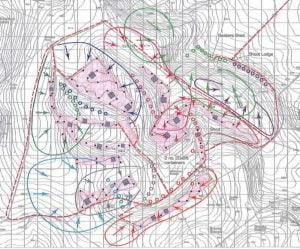 Help need to keep a watch on planning applications! ………………………………..
Help need to keep a watch on planning applications! ………………………………..
Our Society were keen campaigners for the creation of the South Downs National Park which came into being in 10 years ago. The new National Park designation theoretically provides the highest planning protection. However, having this protection doesn’t mean to say our countryside is safe. We are in the crowded south-east of England and there is constant pressure on the South Downs for new land developments. For decades the Society has tried to ensure that this 100 mile stretch of iconic and naturally beautiful landscape covering an area of over 400,000 acres (1.6K hectares) is conserved and enhanced, whilst protecting wildlife and cultural heritage.
How do we, in our Society, go about ensuring the Park will survive for future generations to enjoy it? Well, any new development must have planning permission and we monitor new planning applications. Some may not be in accordance with the National Park purposes, so we lobby and/or comment to the Park. We do this through a team of volunteers who keep a check on applications in their local area and raise any problems or issues with the Society’s Policy Officer who then takes the matter up with the National Park.
Why is this important? Because, once a planning permission is given there is virtually no way of undoing it so it’s good to catch these things early and convince the officers and members of the National Park to consider our comments aimed at protecting the Park.
 We make no bones about it; it’s difficult keeping an eye on the thousands of planning applications across the Park in all of its 176 parishes. The South Downs National Park Authority processes far more planning applications than any of the other 15 national Parks in Great Britain. However, we believe we’ve made it easy for people to volunteer a little bit of their time to check planning applications on a weekly or monthly basis. We have divided up the area of the Park into about 25 small ‘districts’. Each volunteer checks on their own district. This only takes an hour or two a week. Our office circulates the planning lists to all our committee members and the ‘District Officer’ just has to look for the ones on his/her patch and send in an email with a note of concern to our office. Basically, that’s it!
We make no bones about it; it’s difficult keeping an eye on the thousands of planning applications across the Park in all of its 176 parishes. The South Downs National Park Authority processes far more planning applications than any of the other 15 national Parks in Great Britain. However, we believe we’ve made it easy for people to volunteer a little bit of their time to check planning applications on a weekly or monthly basis. We have divided up the area of the Park into about 25 small ‘districts’. Each volunteer checks on their own district. This only takes an hour or two a week. Our office circulates the planning lists to all our committee members and the ‘District Officer’ just has to look for the ones on his/her patch and send in an email with a note of concern to our office. Basically, that’s it!
One can do as little or as much as you want to help. If you want to join our network please CONTACT US.










